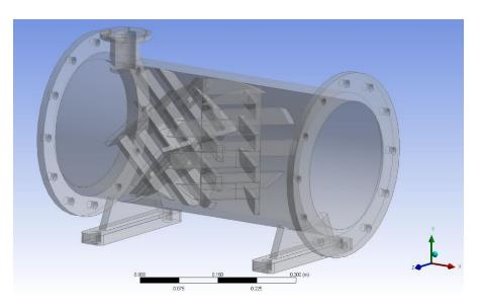By leveraging the advanced capabilities of Ansys simulation, engineers can overcome the complexities of the mixing process and gain invaluable insights into system design and optimization. With the ability to analyze concentration variation, residence time, shear rate, local temperature, and pressure drop, engineers can optimize their systems for optimal performance and efficiency. The power of simulation allows industries to save time, reduce costs, and enhance the overall quality of their mixing products and mixing processes.
Goals and Challenges for Simulation of Mixing Process
Engineers face many difficulties when trying to simulate the mixing process. Appropriate equipment sizing for sufficient mixing is one of the main objectives. To effectively replicate a mixer like a static mixer, the proper ratio of flow rates, material characteristics, and equipment dimensions must be found. Furthermore, when designing efficient mixing systems, it is critical to accurately calculate the pressure drop and required pumping power. Resolving viscous and shear heating impacts the performance of a system and, therefore, should be resolved accurately in simulation. Controlling the temperature is another essential component of effective mixing. For a static mixer, for example, an Ansys simulation could be used to assess the mixing process by evaluating the above variables.
SMX mixer (top) and Sulzer Mixer bottom (https://www.sulzer.com/en/shared/products/static-mixer-smv)
Solution for Simulating the Mixing Process
Ansys provides an innovative solution to address the difficulties of simulating the mixing process. Ansys' advanced modelling capabilities for multi-species, complex rheology, and custom geometries (SMX/Kenics) allow engineers to accurately analyze flow patterns, shear forces, and temperature distributions. Also, the Design of Experiments feature helps engineers identify the ideal operating conditions for the mixing process.
Concentration variation
Advantages of Utilizing Ansys Simulation
Ansys simulation offers numerous benefits for analyzing the mixing process. By analyzing various parameters like concentration variations, residence time, shear rate, local temperature, and pressure drop, engineers can optimize system design for precise control over product composition, efficiency, and cost-effectiveness in different industries.
One of the key benefits of utilizing Ansys simulation is the ability to determine concentration variations throughout the mixing process (Figure 2). This ensures the final product's consistency and desired specifications. Additionally, the Ansys simulation empowers engineers to calculate the shear rate, residence time, local temperature, and pressure drop, which are all essential parameters for industries such as pharmaceuticals, food, chemical processing, and wastewater treatment. By accurately simulating these parameters, engineers can identify potential areas of high shear stress, optimize the system design, and achieve efficient and cost-effective operations.
Figure 2: concentration variation
Summary
When an engineer conducts the simulation of a static mixer, they must overcome various challenges, such as suitable equipment dimensions for optimal mixing and finding pressure drop, pumping power, shear and viscous heating, and operation temperature. These challenges require expertise and careful consideration. By harnessing Ansys' advanced simulation capabilities, engineers in mixing industries can overcome the complexities of the process, save time, reduce costs, and improve the overall quality of their products and processes.
Dec 15, 2023 10:49:10 AM



